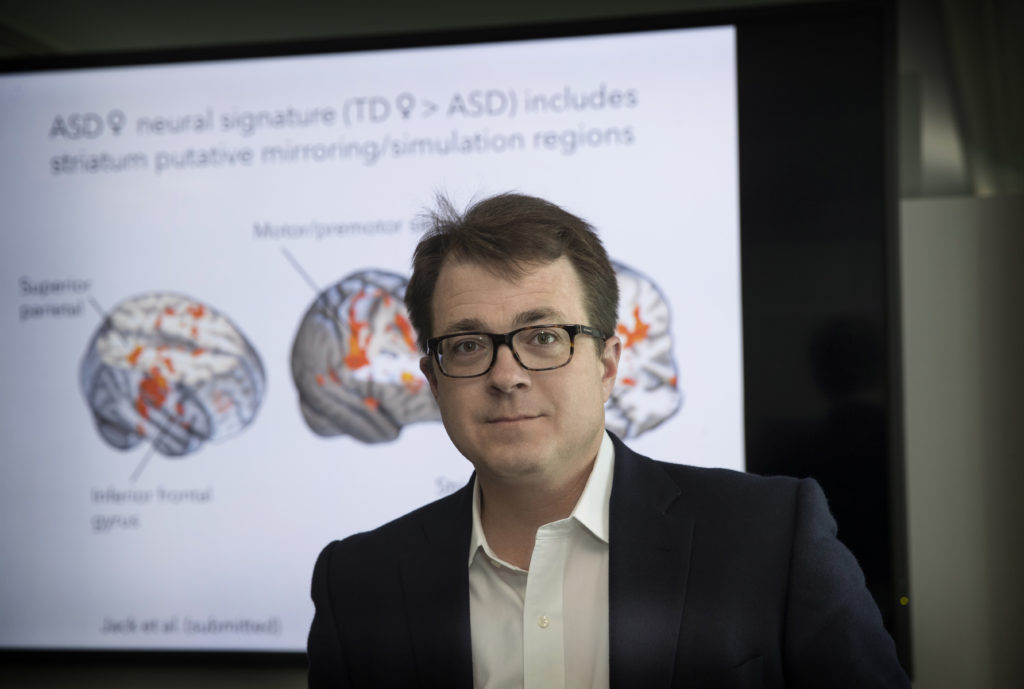Kevin Pelphrey, PhD, of UVA’s Department of Neurology, and a coalition of scientists at UVA and other top institutions are taking a multi-pronged approach to understanding a great mystery of autism: Why are four times more boys diagnosed with the condition than girls? The lack of information about autism’s manifestation in girls means many are never diagnosed and miss out on beneficial interventions, Pelphrey fears.
The researchers, including experts at UVA’s Curry School of Education, are following children over the course of many years, all the way to adulthood. They hope their research will shed light on autism-spectrum disorders (ASD), which affect one in 59 children, and also identify the best interventions for both girls and boys.
“Our goals include providing a much better understanding of the differences in how autism manifests in girls versus boys,” Pelphrey said. “We want to use the knowledge we gain to help us get the right treatment to the right individual at the right time.”
Differences in Boys and Girls
Pelphrey, Harrison-Wood Jefferson Scholars Foundation professor at UVA, uses high-tech brain scans to illuminate our understanding of ASD, but his research project goes far beyond that. Pelphrey and his collaborators are taking a four-pronged approach that:
- Identifies sex differences in brain development in children with ASD;
- Uses gene sequencing to link gene variations with degree of brain abnormality;
- Uses those findings to predict children’s outcomes in adolescence and young adulthood;
- And validates those findings via collaboration with people with ASD.
The researchers hope to facilitate the transition into adulthood for people with ASD. Shedding light on ASD in girls is of particular importance, as that is an area of research that has been almost entirely overlooked, Pelphrey said.
“Our approach has the advantage of understanding how autism emerges out of interactions between genetic differences, changes in neural circuity and differences in thinking and acting,” Pelphrey said. “This better captures the complex and developmental nature of autism-spectrum disorders.”
Pelphrey and his colleagues have already published dozens of peer-reviewed scientific papers that shed important light on autism as part of their research collaboration. And they are excited about what discoveries lie ahead.
About the Autism Centers of Excellence Program
The research is supported by the National Institutes of Health’s Autism Centers of Excellence Program, grant R01MH100028. The program backs large, multidisciplinary studies that aim to determine the causes of autism and identify potential treatments.
Pelphrey holds joint appointments in the School of Medicine and UVA’s Curry School of Education. He is part of UVA’s Brain Institute, a university-wide effort to accelerate and enhance brain research.
Pelphrey’s recruitment to UVA was facilitated, in part, by the Jefferson Scholars Foundation, a group dedicated to attracting extraordinary minds who possess the highest qualities of leadership, scholarship and citizenship. UVA’s Curry School also played an important role in bringing him to UVA.
To keep up with the latest medical research news from UVA, subscribe to the Making of Medicine blog at http://makingofmedicine.virginia.edu.


